#Practitioner Emphasis
Explore tagged Tumblr posts
Text
Who's coming towards you and what do they bring to the table?
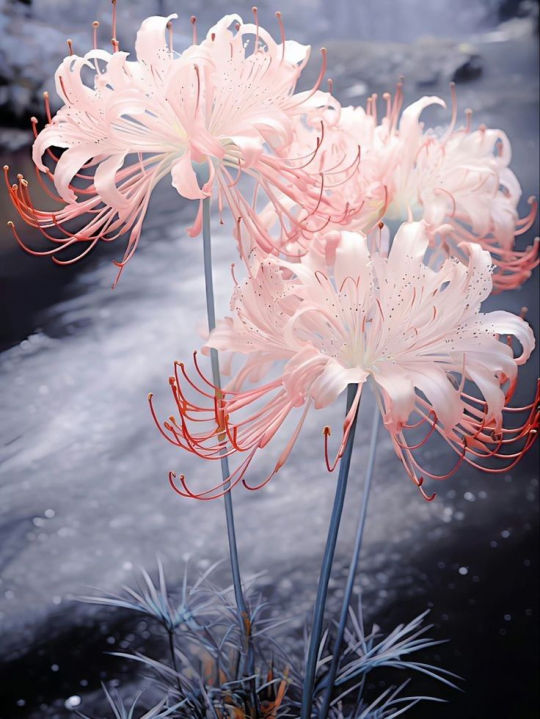


Group 1 - Spider lilly
Who are they? In Japanese culture, the spider lily is believed to bloom near graves. It is associated with the afterlife and the notions of death and rebirth. This flower holds a very scorpionic energy. It is also a symbol of eternal love. This specific white lily shown in the picture is also a symbol of purity and innocence. If we take that into account, the person coming towards you can be viewed as mysterious and deep, somewhat cold. But once you get to know them, you realize that they are rather outgoing and pure, kind and childlike. They marvel at the beauty of life and want nothing but to love and be loved.
Looking at the different cards you got, there’s a lot of emphasis on communication and voicing one’s opinions or truth without fear. This person could have a beautiful voice. They could be a singer or a spokesperson, an advocate or any other profession that involves speaking to a large audience. This person seems to be shy and rather harsh on themselves. They take pride in what they do and the values they stand for. When their actions are not in alignment with their ideals, they tend to criticize themselves a lot. They are represented by Bismuth and Turquoise, both blue crystals. The throat chakra holds an important significance to this person, as well as emotions, intuition and water. Blue could be their favorite color. This person could burn themselves out often by being present for others more than showing up for themselves. They could get throat sickness quite often, especially when they are repressing their truth or telling lies. They have a sharp tongue. They use their voice to shed light on what is contradictory or what needs to evolve. They help people shift their perspective. Teaching could also be their career path.
What do they bring to the table? - Queen of pentacles, 7 of wands, 4 of cups, The Moon, The Fool, Judgement, White Numen
This person brings in major shifts in your life. Renewal is the best way to describe it. They will literally put your world upside down in order to help you gain perspective on what is going on. They’ll show you that there’s nothing wrong in standing for what you believe in. They’ll also teach you how to be the bigger person and choose your battles wisely. They’ll help you introspect and listen to your intuition, take a new start in life and get retribution by accomplishing what you were meant to do in this life time. This person will help you find your true calling and your voice in this global cacophony that is the world we currently live in. With them, you will create a reality in your image. They will also help you value yourself more and set yourself free from any dependence or addiction. They’ll help you detach yourself from people’s judgmental views. Significant zodiac signs for this group are Taurus, Cancer and Scorpio. You can wear blue or connect to the energy of Bismuth and Turquoise to understand this person better on a spiritual level and manifest them into your life.
Group 2 - Lavender
Who are they? Lavender is known to have soothing properties. It is often used in aromatherapy to ease the mind and release tensions related to anxiety, stress. Lavender is a symbol of devotion, serenity and grace. With its purple petals, it could be associated with the spiritual realm. This person is very delicate and kind hearted. They consider people with a lot of care and kindness. They have a pure heart and make people feel safe. They remind me of Taurus and their Venusian sensual and loving energy. This person is down to earth and wise beyond their years. Their crown chakra is highly active. It wouldn’t surprise me if this person already connected with you through your dreams. They could very well be a therapist, a reiki practitioner, a healer that uses alternative medicines or unconventional practices like crystal healing or sound healing. This is further confirmed by two cards of the Threads of fate deck that are related to air and ether : share wisdom and The Sage. This person is a guide and mentor to others. They could be a teacher, some type of guru or an important public figure, a coach, a counselor. This person is very powerful and influent. They could have published a book or a study or shared their experience and what they learned over time online.
They are represented by the hammerhead shark. They have a lot of determination and drive. They are also incredibly mature. They could very well be older than you. I’d say at least ten years older. Purple and blue could be their favorite colors. If they were a major arcana, I think this person would be the Hermit. So Cancer could also be relevant. They are also represented by Kyanite and Amethyst. Kyanite is advised to people who feel restless, who overthink or get caught in their mental space too often. This shows that this person is a deep thinker. They take things seriously and meticulously. Amethyst is often used in spiritual practices to deepen our connection to the spirit realm and gain clarity. To hone our psychic skills. This person feels very connected to their higher self. They know who they are, what they were meant to do and where they’re heading. They are focused on their mission and won’t lose their time with insignificant matters.
What do they bring to the table? - 7 of cups, 3 of wands, 9 of cups, Temperance, 4 of swords, The Lovers, 5 of swords Other significant zodiac signs are Gemini, Sagittarius and Pisces. This person will teach you how to identify your needs and choose a path that is in alignment with your higher self and your highest good. They’ll help you find balance and emotional satisfaction in the projects that you pursue, the actions you take. They’ll teach you how to recognize the symptoms of anxiety and being overwhelmed by life so that you can retreat and protect yourself. They’ll teach you how to pick your battles wisely and ignore petty attitudes from your peers. They’ll help you handle the pressure of being your true self and choosing yourself over others. They’ll teach you how to love yourself and how to love, how to be in love and receive love. I can say here that this relationship has romantic potential. Surprisingly this part of the reading is the shortest but I feel like there’s no need to overanalyze this because this person will be pretty clear with their intent : they’re here to help and support you, "and that is all you need to know" they want to add.
Group 3 - Sunflower
Who are they? I associate the Sunflower with the bold and brave Leo. I heard in my mind "only the brave" which is the name of a perfume from Diesel. So this could be this person’s perfume. With it’s bright colors and relation to the sun, it is safe to say this person has a bright personality. They are outgoing and friendly, like to be seen and admired. They take great care of their body and appearance. Hence the fragrance reference. This person is cheerful and ambitious. They don’t like lying down and contemplating. They would rather act first and think later. They could have anger issues and sometimes be jealous. The signs of Leo and Aries could be significant. Blue and green could be their favorite colors. This person is represented by the whale shark and the octopus. They are very clever and resilient. They have a strong moral compass and always lead their life according to their values and principles. They remind me of Changbin from Stray Kids. This person likes to make their own mind instead of following others. They’re a natural leader and a loner. With The Creator card and the Withdraw card from the Threads of fate deck, this tells me that this person is creative and works independently. They could be a fashion designer, a writer, a producer, a webdesigner, an architect, a freelance artist in any domain. This person could be known on social media. On the withdraw card is a sleeping fox. This tells me that this person likes their solitude. They need time alone to recharge and create. They don’t like showing people their tricks. They like to surprise and impress. The creator card shows a hand holding a wand. This for some reason reminds me of Harry Potter. Maybe your person is a potter head. In this case, they’re the typical Gryffindor : athletic, loyal, thinks with their heart (or something else a bit lower when the heart isn’t functioning). They have a strong sex drive and are pretty sensual. Their body matters a lot to them. They go to the gym often.
What do they bring to the table? - 2 of cups, ace of swords, page of wands, ace of pentacles, six of cups, The Tower, 7 of wands
To put it simply, they bring love, sex and a whole lot of fun. But this will be challenging for you, as you are not used to this type of energy. Significant zodiac signs are Scorpio, Sagittarius and Pisces. They bring in new opportunities and a new start romantically speaking. They bring in new experiences and that includes sexuality. They will help you reconnect with the past and make amends with it. They will help you heal your inner child and release trauma regarding intimacy. They will challenge you and push your buttons to get the best out of you. That is their way of showing you love. This is the type of person that will wake you up one morning and get you out of bed to work out with them, and gently scream at you positive affirmations while you’re working on that "summer body" you always wanted. They’ll show you how to have fun with life and explore all the hidden parts of you that you were burying because you were afraid of rejection. They’ll cut through your walls and uncover your masks for you so that you can finally get the happy ending that you deserve. They’ll be your knight in shining armor except that instead of saving you they’ll get you to save yourself. If you ever try to push them away, they’ll only come back stronger and needier. You won’t get rid of them easily.
526 notes
·
View notes
Text
Chaos Magick
Chaos Magick is a modern form of occultism that defies traditional structures and dogmas, embracing a pragmatic, results-oriented approach to magical practice. Unlike conventional magical systems that adhere to specific rituals, symbols, and deities, Chaos Magick emphasizes flexibility, personal belief, and the use of any technique or symbolism that achieves the desired outcome. Originating in the late 20th century, Chaos Magick has become a significant and influential movement within the broader landscape of contemporary occultism, attracting practitioners who value creativity, experimentation, and personal empowerment. This essay explores the history, principles, practices, and significance of Chaos Magick.

History of Chaos Magick
Chaos Magick emerged in the late 1970s and early 1980s as a response to the rigid structures of traditional ceremonial magick and the occult revival movements of the 19th and 20th centuries. The origins of Chaos Magick can be traced to the writings of occultists such as Peter J. Carroll and Ray Sherwin, who were instrumental in developing and popularizing this new approach to magic.
The Influence of Austin Osman Spare:
A significant precursor to Chaos Magick was the work of artist and occultist Austin Osman Spare (1886-1956). Spare's ideas about the subconscious mind, sigils, and the power of belief were highly influential on later Chaos Magicians. He emphasized the use of personal symbols and the manipulation of belief as tools for magical success, laying the groundwork for many of the ideas central to Chaos Magick.
The Birth of the Movement:
In the late 1970s, Peter J. Carroll and Ray Sherwin co-founded the Illuminates of Thanateros (IOT), a magical order dedicated to the practice and development of Chaos Magick. Carroll’s seminal works, "Liber Null" (1978) and "Psychonaut" (1982), became foundational texts for Chaos Magicians. These books outlined the core principles of Chaos Magick, including the emphasis on belief as a tool, the use of sigils, and the concept of "paradigm shifting," where practitioners adopt different belief systems as needed.
Spread and Evolution:
Throughout the 1980s and 1990s, Chaos Magick grew in popularity, particularly in the United Kingdom and the United States. The movement attracted individuals interested in a more personalized and experimental approach to magic, free from the dogmatic constraints of traditional systems. As Chaos Magick evolved, it incorporated influences from psychology, science fiction, pop culture, and postmodern philosophy, reflecting its eclectic and adaptive nature.
Principles of Chaos Magick
Chaos Magick is characterized by several key principles that distinguish it from other forms of magical practice. These principles emphasize flexibility, pragmatism, and the central role of belief in achieving magical outcomes.
Belief as a Tool:
One of the core tenets of Chaos Magick is the idea that belief itself is a powerful tool in magic. Unlike traditional magical systems that require adherence to specific beliefs or deities, Chaos Magick posits that the act of believing—regardless of what is believed—is what makes magic effective. Practitioners are encouraged to adopt and discard beliefs as needed to achieve their desired results, treating belief as a flexible and dynamic tool rather than a fixed truth.
Paradigm Shifting:
Closely related to the use of belief as a tool is the concept of "paradigm shifting." In Chaos Magick, a paradigm is a framework of beliefs, symbols, and practices that a magician temporarily adopts to work a particular spell or ritual. A Chaos Magician might shift between different paradigms—such as using Kabbalistic symbols in one ritual and invoking Lovecraftian deities in another—depending on what they find most effective for their goals. This fluid approach allows practitioners to draw from a wide range of magical and cultural traditions.
Pragmatism and Results-Oriented Practice:
Chaos Magick is inherently pragmatic, focusing on what works rather than adhering to tradition or doctrine. The effectiveness of a magical practice is judged solely by the results it produces. This results-oriented approach encourages experimentation and the development of new techniques, as well as the modification or abandonment of practices that do not yield desired outcomes.
Use of Sigils:
Sigilization, a technique popularized by Austin Osman Spare, is a central practice in Chaos Magick. A sigil is a symbol created by condensing a specific intention or desire into a visual form. The practitioner then uses various methods to "charge" the sigil with energy and launch it into the subconscious mind, where it works to manifest the desired outcome. Sigils are valued for their simplicity and adaptability, making them a popular tool among Chaos Magicians.
The Gnostic State:
Achieving a state of altered consciousness, often referred to as the "Gnostic State" or "gnosis," is a key component of Chaos Magick rituals. This state of mind, in which the practitioner is highly focused and free from distractions, is believed to be crucial for the successful performance of magic. Various methods, such as meditation, chanting, visualization, or sensory deprivation, are used to induce gnosis.
Practices of Chaos Magick
Chaos Magick is known for its eclectic and innovative practices, which can vary widely from one practitioner to another. The following are some of the most common practices associated with Chaos Magick:
Sigil Magic:
As mentioned, sigil magic is a cornerstone of Chaos Magick. The process typically involves creating a sigil by writing out a statement of intent, removing duplicate letters, and arranging the remaining letters into an abstract symbol. The practitioner then enters a Gnostic State, charges the sigil with intent, and either destroys or forgets the sigil to allow it to work subconsciously.
Magical Experimentation:
Chaos Magicians often experiment with a variety of techniques, drawing from different magical traditions, religions, and even pop culture. This might include invoking gods from different pantheons, working with fictional characters as if they were real entities, or incorporating elements of modern technology into rituals. The emphasis is always on what is effective for the individual practitioner.
Deconstructing and Reconstructing Beliefs:
Chaos Magicians regularly engage in the practice of deconstructing and reconstructing their beliefs. By deliberately adopting different belief systems, even those they do not inherently believe in, they explore the effects of belief on reality. This practice often leads to a deeper understanding of the fluid nature of reality and the power of the mind in shaping experience.
Use of Pop Culture and Modern Symbols:
One of the more unique aspects of Chaos Magick is its embrace of contemporary symbols and icons from pop culture. Practitioners might use characters from movies, comic books, or video games as symbols in their rituals, treating these figures as modern-day deities or archetypes. This reflects Chaos Magick's adaptability and its focus on personal relevance over tradition.
Psychological Techniques:
Many Chaos Magicians incorporate psychological techniques into their practice, drawing from fields such as cognitive psychology, NLP (Neuro-Linguistic Programming), and hypnosis. These techniques are used to alter consciousness, influence perception, and reinforce the practitioner’s intent. The integration of psychological methods underscores Chaos Magick's pragmatic and results-driven approach.
Significance and Influence of Chaos Magick
Chaos Magick has had a profound impact on modern occultism, influencing both magical practice and the broader cultural understanding of magic. Its emphasis on flexibility, innovation, and personal empowerment has resonated with a new generation of practitioners who seek a more individualized and adaptive approach to magic.
Democratization of Magic:
One of the most significant contributions of Chaos Magick is the democratization of magical practice. By rejecting rigid hierarchies, dogmas, and the need for formal initiation, Chaos Magick has made occult practices more accessible to a wider audience. Anyone can become a Chaos Magician, regardless of background or experience, as long as they are willing to experiment and learn.
Cultural Impact:
Chaos Magick has also influenced popular culture, particularly in areas related to the occult, science fiction, and the countercultural movements of the late 20th and early 21st centuries. Concepts from Chaos Magick, such as paradigm shifting and the use of pop culture symbols, have found their way into literature, movies, and art, reflecting the movement's broad cultural reach.
Challenges to Traditional Magic:
Chaos Magick challenges the conventional understanding of magic by questioning the necessity of belief in any particular system or deity. This has led to debates within the occult community about the nature of magic, the role of belief, and the effectiveness of traditional practices. Chaos Magick's focus on results over tradition has encouraged many practitioners to rethink their approach to magic.
Influence on Postmodern Thought:
Chaos Magick is often associated with postmodernism, particularly its skepticism of grand narratives and its emphasis on individual experience. The movement’s fluid approach to reality, belief, and identity aligns with postmodern ideas about the constructed nature of reality and the multiplicity of truths. This has made Chaos Magick particularly appealing to those who resonate with postmodern philosophy.
Conclusion
Chaos Magick represents a radical departure from traditional magical systems, offering a flexible, pragmatic, and highly individualized approach to occult practice. By emphasizing the power of belief, the importance of personal experience, and the value of experimentation, Chaos Magick has redefined what it means to practice magic in the modern world. Its influence extends beyond the occult community, challenging cultural and philosophical assumptions about reality, belief, and the nature of power. As a living, evolving tradition, Chaos Magick continues to inspire and empower those who seek to explore the mysteries of existence on their own terms.

#mysticism#occultism#metaphysics#mystic#magick#chaos magick#sigil magick#witchcraft#witchblr#witch#wicca#grimoire#chatgpt
229 notes
·
View notes
Text
Writing Notes: Hierarchy of Needs

Abraham Maslow’s (1943) hierarchy of human needs has profoundly influenced the behavioral sciences, becoming a seminal concept in understanding human motivation.
The original pyramid comprises 5 levels:
Physiological needs: Basic requirements for survival, such as food, water, shelter, and sleep
Safety needs: Security of body, employment, resources, morality, the family, health, and property
Love and belonging needs: Friendship, family, intimacy, and a sense of connection
Esteem needs: Respect, self-esteem, status, recognition, strength, and freedom
Self-Actualization: The desire to become the best that one can be
Maslow posited that our motivations arise from inherent and universal human traits, a perspective that predated and anticipated evolutionary theories in biology and psychology (Crawford & Krebs, 2008; Dunbar & Barrett, 2007).
Maslow developed his theory during the Second World War, a time of global upheaval and change, when the world was grappling with immense loss, trauma, and transformation. This context influenced Maslow’s emphasis on the individual’s potential for growth, peace, and fulfillment beyond mere survival.
It is noteworthy that Maslow did not actually create the iconic pyramid that is frequently associated with his hierarchy of needs. Researchers believe it was popularized instead by psychologist Charles McDermid, who was inspired by step-shaped model designed by management theorist Keith Davis (Kaufman, 2019).
Over the years, Maslow (1970) made revisions to his initial theory, mentioning that 3 more levels could be added:
cognitive needs,
aesthetic needs, and
transcendence needs (e.g., mystical, aesthetic, sexual experiences, etc.).
Criticisms of the Hierarchy of Needs
Criticism of Maslow’s hierarchy of needs has been a subject of ongoing discussion, with several key limitations identified by scholars and practitioners alike. Understanding these critiques and integrating responses to them is vital for therapists aiming to apply the hierarchy in a modernized way in their practice.
Needs are Dynamic
Critics argue that the original hierarchy does not offer an accurate depiction of human motivation as dynamic and continuously influenced by the interplay between our inner drives and the external world (Freund & Lous, 2012).
While Maslow’s early work suggested that one must fulfill lower levels in order to reach ultimate self-actualization, we now know human needs are not always clearly linear nor hierarchical.
People might experience and pursue multiple needs simultaneously or in a different order than the hierarchy suggests. After all, personal motives and environmental factors constantly interact, shaping how individuals respond to their surroundings based on their past experiences.
Cultural Bias
One of the primary criticisms is the cultural bias inherent in Maslow’s original model. While many human needs can be shared among cultures, different cultures may prioritize certain needs or goals over others (Tay & Diener, 2011).
It’s often argued that Maslow’s emphasis on self-actualization reflects a distinctly Western, individualistic perspective, which may not resonate with or accurately represent the motivational structures in more collectivist societies where community and social connectedness are prioritized.
Empirical Grounding
The hierarchy has also faced scrutiny for its lack of empirical grounding, with some suggesting that there isn’t sufficient research to support the strict ordering of needs (Kenrick et al., 2010).
In practice, this limitation can be addressed by viewing the hierarchy as a descriptive framework rather than a prescriptive one.
Source ⚜ More: Writing Notes & References ⚜ Writing Resources PDFs
#writing reference#writeblr#dark academia#character development#psychology#spilled ink#literature#writing tips#writing prompt#creative writing#fiction#writers on tumblr#writing advice#story#novel#light academia#writing inspiration#writing ideas#writing resources
121 notes
·
View notes
Note
What counts as a spell? Is intent all you need or do you have to do something before to get it all juicy and stuff.
Hi Anon! What a fun question, because there is no answer except this CAN OF WORMS you just opened.
There is no consensus anywhere as to what constitutes a "spell."
There is even LESS consensus as to what makes a spell go.
Intent is a good starting place. It is probably where you should start for all acts of practical magic.
But I find that in it's common form, the idea of intent + willpower = magic has been diluted past the point of utility for most people.
Like if we're talking about "intent is everything" I'm reminded most closely of Chaos Magic. But Chaos Magic is not a school of "just set your intent and you've worked magic!". It's a very rigorously developed system.
In Hine's Condensed Chaos, he lists the third Core Principal of Chaos magic as technical excellence, and I quote:
One of the early misconceptions about Chaos Magic was that it gave practitioners carte blanche to do whatever they liked, and so become sloppy (or worse, soggy) in their attitudes to self-assessment, analysis, etc. Not so. The Chaos approach has always advocated rigorous self-assessment and analysis, emphasized practice at what techniques you're experimenting with until you get the results you desire. Learning to 'do' magic requires that you develop a set of skills and abilities and if you're going to get involved in all this weird stuff, why not do it to the best of your ability?
Later in the book, Hine likens "magical powers" to the concept of achievements, and goes on to say:
Something which is an achievement is the result of practice, discipline, and patience.
Shortly after:
Chaos Magic is not about discarding all rules and restraints, but the process of discovering the most effective guidelines and disciplines which enable you to effect change in the world.
(In above quotes, all emphasis my own)
But these ideas get taken - and I'll give a big nod to the LOA which is just the worst kind of brainrot for encouraging the "intent is all that matters" mindset - and the ideas get diluted so much that people are literally out here saying, "so all those people who spend years studying magic in order to get results are buffoons? All I have to do is imagine what I want and it will be delivered to me? All humans since the start of history just have to decide they want something and it will happen in a miraculous manner?"
(Not you, Anon. I'm just in a mood)
In my mind, yes - something beyond intent must occur in order to make spells go.
But what?
Anon, have you ever heard that dumb belief floating around that all herbs in a spell can be replaced by rosemary, and all stones in a spell can be replaced by clear quartz, and these two things are "universal substitutes"?
I am 95% sure that this nonsense was based on two very popular dictionaries Cunningham wrote in the 80s, the Encyclopedia of Crystal, Gem & Metal Magic, and Encyclopedia of Magical Herbs.
In the very long entry for Clear Quartz:
Quartz crystal is used as a power amplifier during magic. It is worn or placed on the altar for this purpose.
And from Rosemary:
Rosemary is generally used as a substitute for frankincense.
And I believe that someone somewhere got the idea that since clear quartz amplifies all other powers, it therefore somehow magically Ditto-copies all other powers, and like a shapeshifter somehow becomes something it is not nor ever was.
And, you know. What's the difference between subbing out frankincense and blackthorn between friends?
These beliefs have become so popular that sometimes when unscrupulous blogs rip off entire Cunningham encyclopedia entries and paste them into tumblr posts (without credit), THEY INCLUDE THE EXTRA MADE-UP BIT ABOUT ROSEMARY BEING A UNIVERSAL SUBSTITUTE.
Anon, your question is "is it just intent or do we need other stuff to make it go," but sadly,
IMO common beliefs about the stuff that makes spells go have also been diluted past the point of utility for most people.
Because if I sat here and said, "hey Anon, it's not just intent, you also have to use correspondences ^-^/" then the very first thing you are likely to run into is absolute nonsense about correspondences. IMO, effective utilization of correspondences is a skillset based in research, theory, and technique.
Or if I said, "you also have to raise energy! 👍", this may be mistaken to mean, "set intent but also visualize white light inside of a candle," because the concept of raising energy and visualizing has been (IMO) diluted past the point of utility for most people. I believe that effective utilization of energy work is a song composed of many notes and chords, several of which you must practice before you can utilize it.
And to complicate all of this, which non-diluted things in which combinations you need to make the spell go depends on what paradigm you operate off of, because while there are approximately one billion ways to do magic that works, my currently very dim worldview is that most people who are talking about magic are doing magic that doesn't work,
and in my opinion the actual basis and reasoning, like the rationality behind the magical systems is really important. Because you need that shit to understand what it is within that system that makes the spell go.
And you need to understand what makes the spell go to make the system fit into your life without breaking it, and in order to troubleshoot problems without making things crumble further.
Because when people don't understand the basis and reasoning you end up with "rosemary is a universal substitute" and "imagining white light makes the spell go."
There are a few circumstances where you can totally strip technique from theory and be successful, but there are also a hell of a lot of people out here feeling shit about their practice because their spells never seem to work.
So.

I really just recommend choosing what school of magic you would like to learn about and participate in, and reading an introductory book on it.
This is because it is the job of introductory books to explain the principles and theories behind a system of magic, and most importantly, what makes the magic go, and a step-by-step primer on what you, the practitioner, are supposed to do to make that kind of magic go.
Despite above rambles I'm really not a Chaote, so I can't recommend a strong primer. As far as I'm aware, Liber Null & Psychonaut by Peter J. Carroll is a core text.
For Traditional Witchcraft, try The Crooked Path by Kelden.
For something more Wiccan, I can't recall having anything bad to say about Psychic Witch by Mat Auryn.
If either of these things are too Witchcrafty for you, try Six Ways by Aidan Wachter, which is still witchcraft, but it hits different.
For a general primer on helping your spells go, try Elements of Spellcrafting by Jason Miller.
355 notes
·
View notes
Text
BENEHEALTH - SİLVER

Functional medicine is a systems biology-based approach that focuses on identifying and addressing the root cause of disease. Rather than simply treating symptoms, functional medicine practitioners aim to uncover underlying imbalances or dysfunctions that contribute to disease. By addressing the root cause of disease, functional medicine can provide more effective and sustainable solutions for patients. This approach recognizes that each symptom or differential diagnosis may be part of a larger, more complex pattern of dysfunction and aims to address the underlying causes of these patterns. Another basic principle of functional medicine is personalized medicine. This approach recognizes that each individual has unique genetic, environmental, and lifestyle factors that contribute to their overall health and well-being. By taking a personalized approach to care, functional medicine practitioners can tailor treatment plans to each patient's specific needs and goals. This may include nutritional guidance, supplements, health coaching, and other interventions that address the individual's unique needs and challenges. By treating each patient as an individual, functional medicine can provide more targeted and effective care. Functional medicine also places a strong emphasis on patient empowerment and education. By providing patients with the information and tools they need to take control of their own health, functional medicine practitioners can help patients achieve long-term health and wellness. This may include nutrition education, lifestyle changes, stress management techniques, and other strategies to improve overall health and well-being. By enabling patients to take an active role in their own health, functional medicine can help develop a sense of ownership and responsibility for one's own well-being, leading to better health outcomes and improved quality of life.
423 notes
·
View notes
Text
marylily in canon!
Mary is only mentioned twice in canon (which offends me, Mary deserves so much more, the whole series needs more women rep) but it’s okay, fanfics fix that, and what’s even better are the details about the times Mary was mentioned...
In The Prince’s Tale, in book 7, in Snape’s memories, Lily tells him, “I detest Avery and Mulciber! Mulciber! What do you see in him, Sev? He’s creepy! D’you know what he tried to do to Mary Macdonald the other day?”
Snape: “That was nothing. It was a laugh, that’s all—”
Lily interrupts, “It was Dark Magic, and if you think that’s funny—” (She never finishes what she thinks because Snape brings up what Potter and his mates get up to.)
Later on, when Snape’s waiting at the entrance to Gryffindor in order to apologise, Lily says, “I only came out because Mary told me you were threatening to sleep here.”
What we can conclude from this is: Mary was a Gryffindor, a Muggle-born, Lily’s friend, and a practitioner of Dark Magic attempted to assault her. However, if Mary was only Lily’s friend, then why would Lily call her “Mary Macdonald” when discussing what happened to her with Snape? (I know this is probably the author telling the reader Mary’s full name, but still, in the context of the book, it wasn’t necessary for Lily to say Mary’s full name, nor was it necessary for the reader to know Mary’s full name.)
In the HP universe, characters call strangers or enemies by their surnames, and friends by their first names or nicknames, even in conversations with other people. The fact that Lily places weight on Mary’s full name signifies that Mary is important to her, that everything about Mary is worth noting, that Mary Macdonald is her full identity and should be respected. No one can take it away, especially not Mulciber after his attempted assault. In other books I’ve read, when characters place emphasis and importance on another character’s full name, they feel strong respect for them, they believe their name is a beautiful sound, or they’re in love with them. Lily takes the time to say Mary’s full name even in an argument with Snape, which reflects what she would do for Mary. (Which is a lot.) As a reader, one could read their relationship as a strong, healthy, respectful platonic bond. (Or, you know, lovers. But I agree, platonic relationships are superior.)
Next, Lily “came out because Mary” (lmao gay) anyway, the point is: Snape was obviously a sore topic for Lily, and in order for Lily to calmly see him without storming away, Mary would need to know her very well. She’d need to have Lily’s complete trust, they’d need to know each other inside out. Without upsetting Lily, Mary was able to get her to see Snape, which suggests Mary is smart, subtly manipulative, trustworthy, kind, loyal, and Lily’s best friend. Lastly, Mary was never on the list of people in the Order during any of the wars, which means she never joined or fought.
In conclusion, marylily is real, this is all the canon information we know about Mary, and Mary Macdonald is amazing, she’s a legend, I love her, you should love her. Thank you for reading :)
#mary macdonald#character analysis#marauders girls#marauders#marylily#lily evans#mary x lily#marauders era#canon compliant#sapphic#friendship#analysis
70 notes
·
View notes
Text
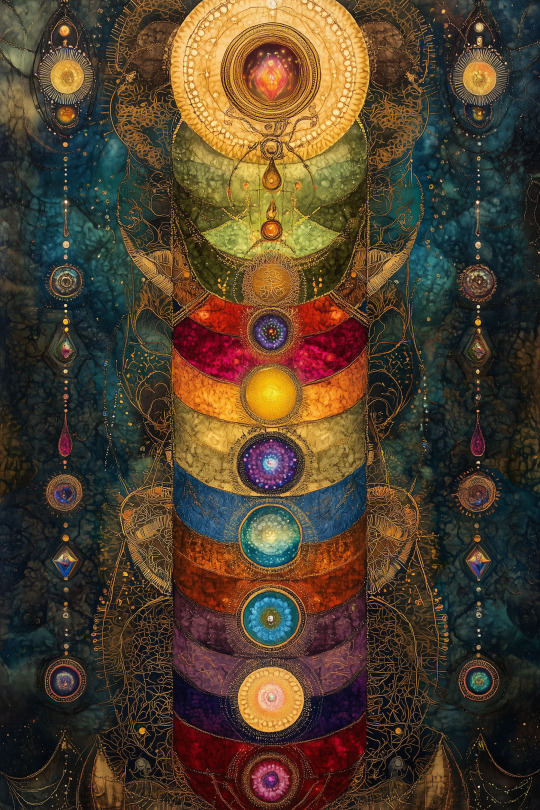
“All know that the drop merges into the ocean, but few know that the ocean merges into the drop.” ― Kabir
Sushamna - Atmanism Talon Abraxas Nadis: The Energy Rivers of Human Body
A student of the great Indian poet Kabir once asked him, “Kabir, where is God?” His answer was simple: “He is the breath within the breath.
” To understand the profound implications of Kabir’s reply, we need to look beyond the physical components of breath—the oxygen, carbon dioxide, and other molecules that stream in and out with our every inhalation and exhalation. Beyond this breath—yet within it—is prana, the universal vital energy that is quite literally the stuff of life.
For those of us who practice yoga, the challenge is to harness this energy so it can fuel our physical, mental, and spiritual development. To do this, we need to look deeply into the mysteries of the mind and the subtle body.
Fortunately, the early practitioners of Tantra voyaged into this inner landscape, mapping the many ways energy circulates within us. Among their most important discoveries were the Nadis, the vast network of energy channels that makes each individual an integrated, conscious, and vital whole.
The Sanskrit word Nadi derives from the root Nad, which means “flow,” “motion,” or “vibration.” The word itself suggests the fundamental nature of a Nadi: to flow like water, finding the path of least resistance and nourishing everything in its path. The Nadis are our energetic irrigation system; in essence, they keep us alive.
According to many Tantric texts, the human body contains 72,000 Nadis that channel prana to every cell. Some are wide and rushing; others are a mere trickle. When this system flows freely, we are vital and healthy; when it becomes weak or congested, we struggle with poor mental and physical health. The practices of hatha yoga are so effective because they strengthen the flow of prana in our bodies, invigorating the current so that it carries away obstructions that block the free flow of energy.
Because Nadis like the chakras (psychoenergetic power centers), prana, and other aspects of the subtle body—don’t show up under microscopes, medical science has relegated them to the realm of the merely metaphorical. But traditional yogis believe that the subtle body is real and that understanding it and working with it complement and counterbalance the emphasis on gross physical anatomy that predominates our current yoga culture. Night and Day
Three Nadis are of particular interest to yogis. The Sushumna (most gracious) Nadi is the body’s great river, running from the base of the spine to the crown of the head, passing through each of the seven chakras in its course.
It is the channel through which kundalini shakti (the latent serpent power) —and the higher spiritual consciousness it can fuel—rises up from its origin at the Muladhara (root) chakra to its true home at the Sahasrara (thousand-fold) chakra at the crown of the head. In subtle body terms, the Sushumna nadi is the path to enlightenment.
The ida (comfort) and Pingala (tawny) nadis spiral around the Sushumna nadi like the double helix of our DNA, crossing each other at every chakra. If you visualize the caduceus, the symbol of modern medicine, you’ll get a rough idea of the relationships among the ida, Pingala, and Sushumna nadis. Eventually, all three meet at the Ajna (command) chakra, midway between the eyebrows.
The Ida Nadi begins and ends on the left side of Sushumna. Ida is regarded as the lunar Nadi, cool and nurturing by nature, and is said to control all mental processes and the more feminine aspects of our personality. The color white is used to represent the subtle vibrational quality of Ida. Pingala, the solar Nadi, begins and ends to the right of Sushumna. It is warm and stimulating by nature, controls all vital somatic processes, and oversees the more masculine aspects of our personality. The vibrational quality of Pingala is represented by the color red.

The interaction between Ida and Pingala corresponds to the internal dance between intuition and rationality, consciousness and vital power, and the right and left brain hemispheres. In everyday life, one of these Nadis is always dominant. Although this dominance alternates throughout the day, one nadi tends to be ascendant more often and for longer periods than the other. This results in personality, behavior, and health issues that can be called Ida-like or Pingala-like.
Ida-like individuals have lunar, or nurturing, qualities but may lack the verve to sustain a strong yoga practice. They are full of potential, but unless they develop their Pingala side may never manifest that potential in either worldly affairs or spiritual development. Pingala-like individuals have solar qualities: type A personalities, lots of creativity, abundant vitality. But unless they develop their Ida side, they may lack the quietude, introspection, and receptivity necessary to yield to the grace of spiritual awakening.
42 notes
·
View notes
Note
What's a '"fallow period"?
Fallowing is an agricultural technique where the land is left without sowing for one or more vegetational cycles to let the land replenish itself and chill. I use the term in my craft to refer to when I do little to no magic and have little to no contact with other entities.
From what I've seen, when most people take a break from their craft, it's more of a hibernation thing because their break falls during their winter - I see this most with magical practitioners with a heavy emphasis on plants in their craft. But for me, summer is a very busy time of year, so my craft gets to sit on the backburner until autumn.
Hope this helps, anon!
~Jasper
32 notes
·
View notes
Text
A Historical and Modern Lesson on Blessings
{My post is cross-posted from The Cobalt Athenaeum aka my original post. You can find the server at the bottom of my pinned post.}
Blessings bridge the earthly and spiritual worlds, bringing comfort, protection, and abundance into people’s lives. From ancient religious rites to modern witchcraft practices, blessings have been a way for humans to connect with the sacred and harness intentions. Let’s dive into where blessings come from and how they’ve evolved in witchcraft practices.
1. The Origins of Blessings: A Historical Perspective
Early Civilizations
Civilizations like ancient Egypt, Sumer, and Greece saw blessings as essential to their religious and daily lives. Egyptians believed blessings granted divine protection to their pharaohs, symbolized through objects like the ankh—a sign for life and prosperity. In ancient Sumer, people invoked blessings from gods like Enki and Inanna to watch over their families and cities, and to bring peace and abundance (Bauer, 2018).
The Influence of Monotheistic Religions
As monotheistic religions spread, blessings became a crucial part of faith practices in Judaism, Christianity, and Islam. In Judaism, blessings like the Birkat Kohanim call upon God’s grace and peace. The Christian tradition also uses blessings, especially through the Psalms, which include passages on seeking divine protection and favor (Harris, 2020).
Medieval European Traditions
By the medieval era in Europe, blessings were everywhere—from fields blessed for a better harvest to knights blessed before battle. These religious blessings often blended with folk customs, where charms and amulets served as protective talismans, an extension of the blessing itself (Hall, 2016).
2. Blessings in Witchcraft: Past and Present
Ancient Roots in Folk Magic
In ancient and medieval folk magic, blessings protected the home, promoted good health, and encouraged fertility. These rituals were sometimes simple whispered words or chants over an object, thought to carry the protective energies of the natural world or the guidance of ancestors (Green, 2019).
Modern Witchcraft Practices
Today, blessings in witchcraft are dynamic and can be customized to suit the practitioner’s needs. Many modern witches bless their homes, crystals, and sacred tools by lighting candles, reciting incantations, or incorporating herbs like rosemary and lavender for peace, harmony and protection. Us practitioners believe blessings focus personal energy and intentions, anchoring them to a specific outcome (Morrison, 2020).
Accessibility in Witchcraft Blessings
Blessings today can be discreet and accessible. Written blessings, blessings done with small objects, or visualized blessings are great for practitioners who need a more flexible approach, whether practicing privately or with physical limitations. This adaptability is part of a broader movement in modern witchcraft to create more inclusive practices, as it should be. (Adler, 2021).
3. Blessings as Personal Empowerment
Intentions and Personal Connection
At their core, blessings are about setting clear intentions. Whether it’s a formal prayer or a whispered affirmation, they align us with energy for growth and protection. In witchcraft, the emphasis often lies in self-empowerment—directing blessings not just toward a higher power but channelling them through personal energy, which can give strength in times of need and despair.
Creating Your Own Blessings
Making a personalized blessing is simple and can hold unique power. Writing a few lines or phrases that reflect your hopes, and maybe holding an object like a crystal or candle as you bless it, can turn the blessing into a deeply personal ritual. The object can even act as a reminder of the blessing whenever you hold or see it.
Blessing a Person or a Place
Blessings for individuals and spaces have been practiced in many cultures as a way to promote protection, well-being, and harmony. Blessing a person often involves invoking spiritual support or positive energy, traditionally done through spoken words, gestures, or even anointing with sacred oils. In Christianity, for instance, blessings are commonly used in sacraments, such as the anointing of the sick, meant to provide healing and spiritual strength (Chadwick, 2019). Similarly, in Hinduism, blessings are given through touch, such as a guru placing a hand on the disciple’s head, believed to transfer divine grace (Flood, 2020).
Blessing a place—whether a home, temple, or other significant location—aims to purify and protect the area, creating a sacred atmosphere. This practice is prevalent in many spiritual traditions, from Tibetan Buddhism’s incense offerings to cleanse and sanctify spaces, to the Jewish tradition of blessing a new home by hanging a mezuzah on the doorpost, symbolizing divine protection over the household (Eisenberg, 2018). In modern witchcraft, blessing a space often involves tools like crystals, incense, or candles, with practitioners invoking positive energies and setting intentions for harmony within that environment (Morrison, 2020).
Across history, blessings have been a way to connect to something "greater". Whether as ancient temple rituals or modern-day witchcraft practices, blessings have always offered people a moment of peace, hope, and connection to their intentions. Through witchcraft, blessings continue to be a powerful tool for personal connection with the energies around us.
References
Adler, M. (2021). The accessible witch: Adapting witchcraft for all. Llewellyn Worldwide. Bauer, S. (2018). The Oxford handbook of the ancient Near East. Oxford University Press. Green, T. (2019). Folk magic and witchcraft in early Europe. Routledge. Hall, R. (2016). Medieval religion and the magic of blessing. University of California Press. Harris, J. (2020). Biblical theology: Past and present. Zondervan. Morrison, L. (2020). The witch’s book of rituals. Sterling Ethos. Chadwick, O. (2019). Anointing in the Christian tradition. University of Chicago Press. Eisenberg, R. (2018). Jewish traditions: A comprehensive sourcebook. Schocken Books. Flood, G. (2020). The importance of blessings in Hinduism. Oxford University Press. Morrison, L. (2020). The witch’s book of rituals. Sterling Ethos.
Would you be interested in the rest of my posts? Check out the Masterpost.
37 notes
·
View notes
Text
The thing that always confuses me about LnDS is how tf Zayne is a famous Cardio Surgery specialist with an emphasis in rare genetic and Evol disorders, but also functions as a regular primary care physician for MC, since most specialists still refer you to your own family practitioner for your non specialty related needs like for a cold or regular injury.
Which means either in the LnDS world Doctors are just super busy and double up on a lot of work (which could be the answer, as drs could be in short supply with wanderer attacks and metaflux accidents happening often), or Zayne is just very very loose with MC and will see her for pretty much whatever she needs seen for so she doesn't go to another Dr which is honestly kind of adorable in a try not to look too closely kinda way lol
#just 4am thoughts with Kay#trying to make the medical field of a fictional work make sense is hurting my brain#time for bed i guess#love and deepspace#lnds#lads#l&ds#zayne#love & deepspace#zayne love and deepspace#love and deepspace zayne#kay's thoughts
137 notes
·
View notes
Text

people worth living for 🌿⛎
The warmest hearts of Scala ad Caelum, the first members of Master Ephemer’s family (ficverse).
(left -> center -> right)
Fidel Askr - A dedicated carpenter and founder of the town’s Restoration Committee. He’s stubborn and willful, with a heart of gold. {he/him}
Aeon Ophiuchus - Ephemer’s eldest, a free, joyous spirit. She matures into a stalwart leader, taking on the mantle of running Scala’s Keyblade Academy. {she/her}
Xenia Athan-Askr - A dainty and soft-spoken medical practitioner. She places emphasis on hard work and compassion. {she/her}
Clio Ophiuchus - The bullheaded second child who takes it upon herself to keep her big sister and little brother in line. She works hard to preserve her family’s legacy for as long as she’s alive. {she/her}
Hestia Lena - A skilled artisan who holds much wisdom and generosity in her soul. She owns her own pottery studio and is a very close family friend of the Ophiuchus—Athan-Askrs. {she/her}
Mori Ophiuchus - The youngest of Ephemer’s children and his only son. A kind and empathetic child who sees the world in a positive light and seeks to defend it. {he/him}
#khocweek2024#kh oc#my art#overmorrow tfs#project E#blorbo family!!!!!!#you get 6 ocs for the price of 1 today haha#fidel oc#aeon oc#xenia oc#clio oc#hestia oc#mori oc#the ophiuchus family#my ocs#my posts#(also. I got a bit emo aging up the adults…)
36 notes
·
View notes
Text
What Shamanism Is Not

When people ask me if I can define what shamanism is, I like to begin by defining what it isn't. Sometimes it is easier to contrast something with what it is not than to define exactly what it is. So in that vein, shamanism is not:
Religion. It is important to highlight that shamanism is not a religion, which involves a set of organized beliefs, practices, and systems that most often relate to the belief and worship of a controlling force, such as a personal god or another supernatural being. In an organized religion, belief systems and rituals are systematically arranged and formally established, typically by an official doctrine (or dogma), a hierarchical or bureaucratic leadership structure, and a codification of proper and improper behavior. Unlike religion, shamanism has no dogma, no religious hierarchy, and is a cross-cultural tradition characterized by direct revelation and hands on experience. Shamanism is based on the principle that innate wisdom and guidance can be accessed through the inner senses in ecstatic trance. No intermediary such as the church or priesthood is needed to access personal revelation and spiritual experience. The essence of shamanism is the experience of direct revelation from within. Shamanism is about remembering, exploring, and developing the true self. Shamanism places emphasis on the individual, of breaking free and discovering your own uniqueness in order to bring something new back to the group.
Psychology. Psychology is the scientific study of the mind and behavior. Psychologists endeavor to understand the motivations and intentions inherent within a person's mental and emotional behaviors. It does so by uncovering the hidden agendas and issues at play in a persons actions and choices. Shamanism acknowledges the value of the psychological perspective, however, it does not seek to understand a person's underlying issues and intentions. That is best left to trained psychologists. Indeed, from the shamanic perspective--which is to say a soul-centered perspective, rather than a mental perspective--it is understood that the inner state of the soul is expressed as thoughts, feelings and emotions in the outer, physical realm. The mental and emotional conditions are but the symptoms or manifestation of the inner state of the soul. Shamanism is a paradigm of self-empowerment, which enables people to engage the soul in ways that foster its growth and evolution.
Metaphysics. Metaphysics is the branch of philosophy concerned with the fundamental nature of reality and being. The perspective of metaphysics is that everything has a function or purpose and its essential nature is to grow and achieve its purpose. It explores abstract concepts such as cause and effect (karma), the nature of time, the existence of God, the meaning of life, the relationship between mind and body, and the existence of free will. Unlike metaphysics, shamanism is based in personal accountability without the imposition of an all-powerful God or theoretical universal laws that dictate the circumstances of our lives. Shamanism is premised on spiritual sovereignty free of karmic reward and punishment. When presented with a situation, shamanism never endeavors to find what the lesson is, understand its purpose, or comprehend the meaning. Instead, practitioners seek to apply their knowledge and skills to resolve the situation. Practitioners employ time-tested methods for altering consciousness to find clarity and solve problems.
What Shamanism Is
Shamanism is a cross-cultural, spiritual path practiced in every continent of the world. It is the most ancient and most enduring spiritual tradition known to humanity. It predates and constitutes the foundation of all known religions, psychologies and philosophies. It originated among nomadic hunting and gathering societies. These ancient shamanic ways have withstood the tests of time, varying little from culture to culture. Over thousands of years of trial and error, primal peoples the world over developed the same basic principles and techniques of shamanic power and healing.
Shamanism represents a universal conceptual framework found among Indigenous tribal humans. It includes the belief that the natural world has two aspects: ordinary everyday awareness, formed by our habitual behaviors, patterns of belief, social norms, and cultural conditioning, and a second non-ordinary awareness accessed through altered states, or ecstatic trance, induced by shamanic practices such as repetitive drumming. The act of entering an ecstatic trance state is called the soul flight or shamanic journey, and it allows the journeyer to view life and life's problems from a detached, spiritual perspective, not easily achieved in a state of ordinary consciousness.
The shamanic practitioner traverses the inner realms in order to mediate between the needs of the spirit world and those of the material world. It is an inward spiritual journey of rapture in which the practitioner interacts with the inner spirit world, thereby influencing the outer material world. From a shamanic perspective, all human experience is self-generated. Experience is shaped from within since the inner world is a microcosm of the outer world. Each human being is a hologram of the universe. Essentially, we are the universe experiencing itself in human form.
#shamanism#consciousness#shaman#shamanic drumming#shamanic practice#shamanic journey#shamans#spirituality
58 notes
·
View notes
Text
The nature of cursed energy, after death sequences and a possible inspiration from Tibetan Buddhism & Tibetan book of the dead
"Nine points. Polarized light" A theory on the nature of cursed energy, after death sequences and a possible inspiration from Tibetan Buddhism & Tibetan book of the dead (Bardo Thodol). This is the 1st part of a long theory that I intend to cover in multiple parts

Gojo's chant
The Tibetan book of the dead, also known as Bardo Thodol is a sacred text guiding souls through the afterlife. Rooted in Tibetan Buddhism, it's a profound exploration of life, death and the transitional state between ( Bardo) . The origins of Bardo Thodol can be traced back to the 8th century when emperor Trisong Detsen directed Indian buddhist master Padmasambhava (lotus born) to bring the Buddhist teachings to Tibet. Also known as 'Guru Rinpoche' he brought the teachings of Bardos ( state between Death and Rebirth)
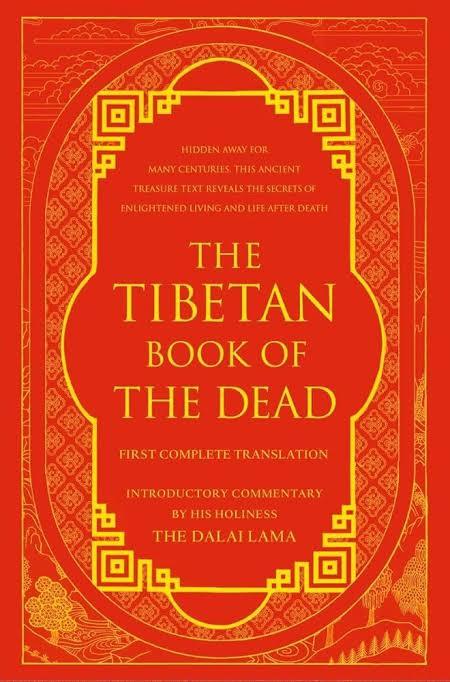
Tibetan book of the dead
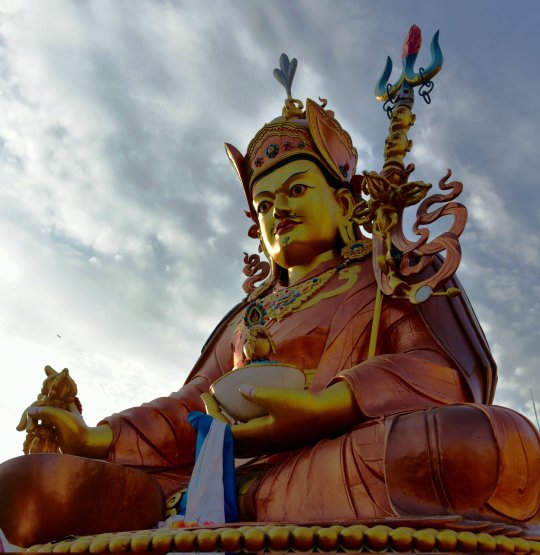
Padmasambhava Physics states that energy can neither be created nor destroyed, While we're alive a pattern of energy called consciousness or the 'mind' flows within our body that we identify as ourselves. But what happens after death ? This energy is no longer associated or anchored by the Physical body. It now floats, freely. In JJK the physical body is also like a barrier for the soul / consciousness which is why the innate domain or inner world manifests within a barrier or outline through a domain expansion.

Body acting as a barrier for a domain Once consciousness is loosened from any barriers ,Thoughts have no limitations set for them. "In life you make the mind , in death the mind makes you" what does this buddhist saying mean ? For ex- suppose you want to visit a place, while alive you have to follow the whole process of travelling to visit it. After death , the mere thought of visiting it will take you there (the dream realm version of it). This seems like a Fascinating concept until you think about the negative thoughts that one might have. Thoughts that while alive are slower in realization by the physical limit of the body, thoughts that in death will become your reality instantly, sometimes in rapid unending succession. This is why Buddhism places heavy emphasis on mental purification while you are alive, achieving the state of enlightenment and learning the illusory nature of one's consciousness before they Proceed to afterlife. The mind forms that one entertained or clung to while alive that manifest as body-less consciousness after dying in the dream realm are called 'Bardo'. Bardos are formed by the 'Karmic energies' or repeated thoughts one accumulates during their lifetime.
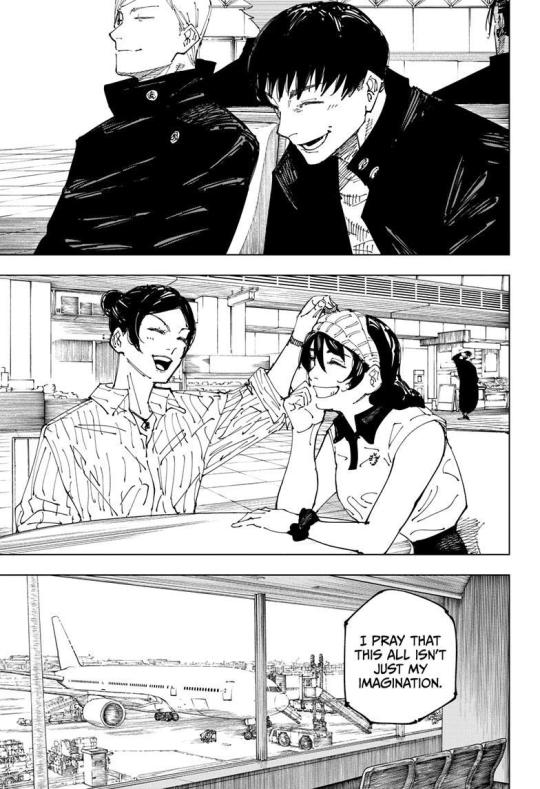
An example of the transitional state between death and rebirth (Bardo) Bardo Thodol's main purpose is to make practitioners aware of the unreality of what manifests as bardos post death. The concept of Karma refers to one's action but not merely action , Karma includes your thoughts, deeds and words. As mentioned above , the Buddhist belief is to purify the mind pre death but most if not all are unable to attain such mental purification, hence the karmic energy is inherently negative when it leaves the body, this karmic energy IS cursed energy. While passing through the state of Bardo , the deceased experiences visions And hallucinations influenced by their karmic energy they accumulated while being alive. If the deceased can recognize that these visions are illusory, let them go, they will attain a better birth and ultimately Nirvana.

Mention of karma in JJK

Even people outside of japan release karmic energy ( Cursed energy) In JJK, rebirth and attachment to one's consciousness is presented by the concept of North and South directions. North meaning rebirth, South meaning being chained to your Karma.
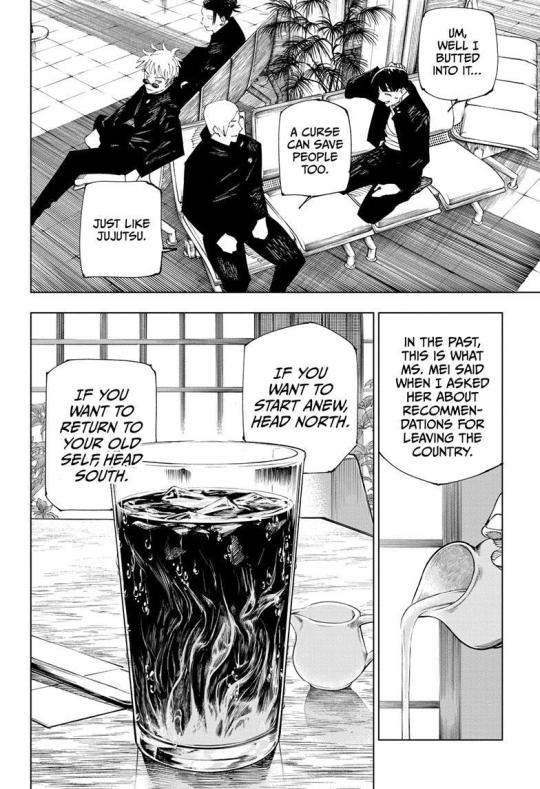
The idea of North and south pertaining to rebirth and clinging to your past self
There are mainly 3 sections of the Bardo state-
Chikai Bardo ( Bardo of the moment of death) - this occurs at the exact moment of death .According to Buddhist beliefs individuals may experience a profound luminosity or a clear light. The teachings suggest recognizing that clear light

The core of cursed energy (Consciousness) that Gojo experienced right at the moment of death represented with a luminous light 2. The Chonyid Bardo ( Bardo of the intermediate state of visions) After death in this state individuals may encounter various visionary experiences which can be pleasant or terrifying, the experiences are the reflections of one's karma and mental projections, individuals are said to have been visited by either deities or their loved ones in this state.

Gojo visited in his Bardo state by his loved ones

Kashimo in attendance of a deity (Sukuna) in his bardo state 3. Sidpa bardo (Bardo of Rebirth) -it refers to the period between the end of Chonyid Bardo and the time of Rebirth, in this phase the consciousness seeks a new birth guided by it's karma and desires, individual is drawn to a new existence ( Someone choosing to go North) The idea of Bardo is recognised in a broader sense in Tibetan Buddhism, various transitional states like when you dream or meditate, the state of Bardo is akin to a mental high or Trance. It's similar to NDE's ( Near death experiences) where survivors often experience a profound sense of peace and blissfulness.

Gojo feeling a mental high after experiencing the core of cursed energy (Chikai Bardo) As for why i started this thread with the words used in Gojo's chant, I think "Nine points" refers to the Nine levels of consciousness in Buddhism, 'Light' is often referred to as pure consciousness across multiple cultures and religions , the 9 levels of consciousness are - The first 5 levels ( the 5 senses of the human body) Touch, taste , sight, hearing and smell. The basic layer of consciousness formed from physical sensations, what Heavenly restriction heightens

Heavenly restriction's impact on the first 5 consciousness, possibly a binding vow that sacrifices the latter levels for heightening the first 5 The 6th level - where one understands what is being taken in from the 5 senses It's the ability to perceive and judge things , it's the ability to process information. This level integrates all the sensory input from first 5 consciousness . Perhaps that's what 6 eyes are, mastery over the 6th consciousness
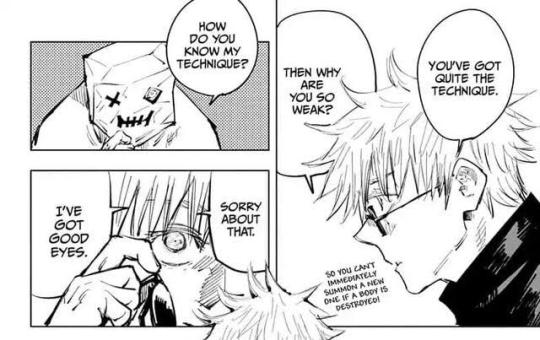
7th level- unlike the prior 6 consciousness, this is directed by one's inner thoughts without any sensory input. This level deals with comprehension of the abstract, morals , distinguishing between good and evil etc. It's akin to one's ego
8th level (Alaya)- The karmic storehouse or storehouse consciousness which is known as 'Alaya' in Sanskrit. This storehouse accumulates one's karmic energy through interactions with others, as well as the causes and effects of one's actions. It stores all of one's thoughts, deeds and words throughout a lifetime , unlike the first 7, the 8th consciousness persists even after death.

Storehouse consciousness (Megumi's shadow) 9th consciousness ( Brahman)- the final consciousness from which all energy arises. It is the pure consciousness that can even suppress one's negative karma , it cannot be tarnished by any karma, the core for all mental and spiritual activity We have seen the word "Brahmic barrier" mentioned in JJK while referring to the most supreme form of barriers that are even better than the barriers tengen used to suppress the outbreak of curses in Japan, so this tracks extremely well.
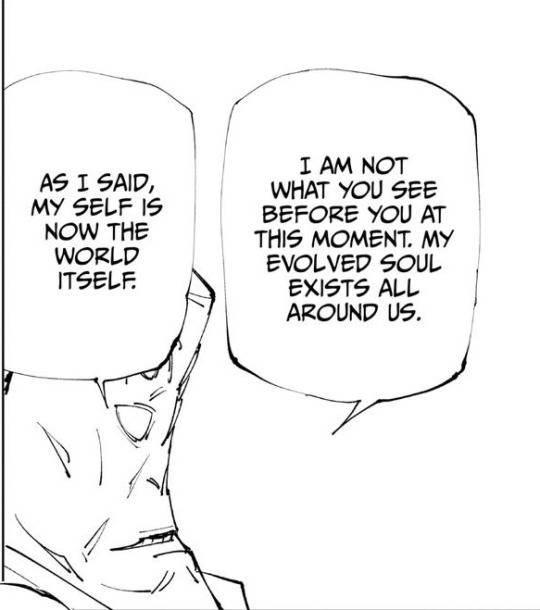
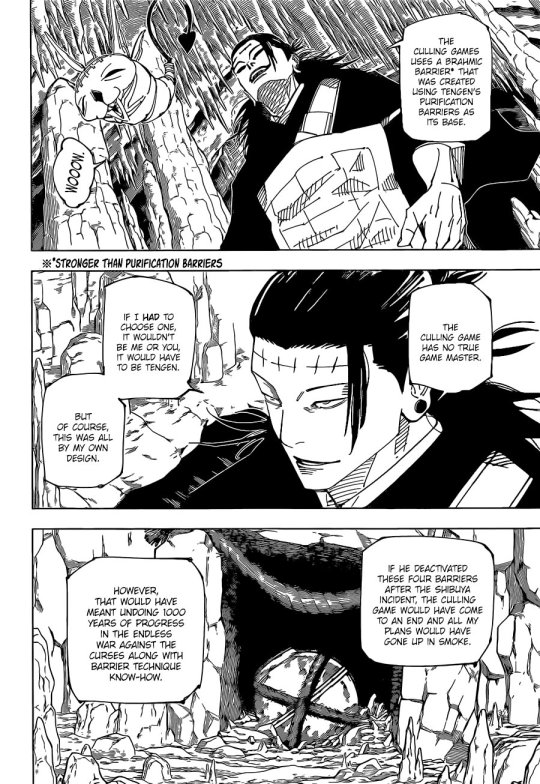
Pure consciousness and the Brahmic barrier, the supreme barrier I'll end this part of my theory here, Next I'll be continuing with Megumi and his connection to the 8th consciousness, the storehouse consciousness (Alaya)
60 notes
·
View notes
Note
what are your thoughts on tertius lydgate wrt marking shifts in discourses of medicine? his position in the novel fascinated me as someone who feels very strongly about the role of doctors in society, and I’m curious to hear your thoughts on the matter
YES lydgate rules so hard in my personal pantheon of doctor characters. sorry this has been in my inbox for a thousand years i had was rotating.
so first of all one of the things that makes 'middlemarch' interesting is that it's a historical novel. so, when george eliot creates a doctor character for the year 1829, writing from 40 or so years later, she's using him to comment on (her perception of) changes to medical science in britain over the course of several decades. so for instance, the fact that lydgate trained in edinburgh and paris tells us immediately that we're supposed to understand him not just as a member of a newly 'respectable' profession, but specifically as having a viewpoint that is informed by radical student politics (edinburgh) and conceptions of the doctor as a social reformer (paris) as well as the research traditions of raspail and bichat. indeed this is why lydgate's crusade in town includes his ideas about sanitation and public health; in contradistinction to the other physicians, he sees his medical and scientific authority as giving him the ability and responsibility to reform the town more broadly. like his parisian counterparts, lydgate clearly sees a link between, eg, cholera and more general social and political unrest. he fashions himself as someone who can doctor the social body as much as the individual patient; given his parisian training we can place him loosely in a social-hygienist context here.
lydgate is also a pretty early example in british literature of a doctor character who's presented as a) not a charlatan and b) heroic explicitly on the basis of his medical and scientific status. british medical practitioners were subject to a new licensure requirement in 1815 i believe (i'd have to double check this date i don't read as much in 19thc britain); 'middlemarch' was written around 1870 and set in 1829–32. so, for eliot, lydgate was genuinely part of a markedly new wave of physicians—men who were licensed (read: state-approved) and occupied a new social position. lydgate is also minor aristocracy, which is part of what makes it possible for him to scoff at the town's older physicians, but much of his social position in the town is accrued in conjunction with the newly and increasingly prestigious status of his profession. this is not really a character type that would have been plausible in a realist novel set in the same country a generation or two earlier.
eliot herself was married to a man of science and also kept abreast of medical and scientific ideas (for example, she was extremely interested in phrenology, an influence you can see throughout 'middlemarch'), and lydgate is very much a man of the times in this respect: he diagnoses george's scarlet fever in the early stage, for example, and refuses to dispense his own prescriptions or to take money from pharmacists. these, along with his emphasis on public health and sanitation measures, mark him as not just an idealist but someone whose medical practice was genuinely steeped in current principles of scientific and ethical reform. even his embrace of bichat's tissue theory, though presented somewhat vaguely, would have signalled to a reader familiar with recent anatomical theories that lydgate was not just a fashionable thinker (bichat died in about 1802, but his work came to popularity over the next 3-4 decades in england and france) but also a precise and naturalistic one, aligning himself with a research tradition that emphasised specific, local lesions as etiological agents (compare this to the brain-localisation ideas of the phrenologists).
ultimately, lydgate's tragedy is that his medical knowledge isn't matched by any social acuity, and his match with rosamond is dissatisfying for both of them. i don't read this as eliot condemning the aspirational early stages of lydgate's career; his mistakes are all made in the interpersonal arena, with both rosamond and the raffles affair. had he played these situations smarter, who knows what he may or may not have accomplished for the residents of middlemarch. instead, he ends the book as a successful but dissatisfied physician to the wealthy, in a position of financial security and medical specialisation but without the kind of moral or political status that he sought earlier in the book by presenting himself as both a social and medical reformer. eliot thus engages, i think, another new type of doctor character: lydgate at the end of the book still has no trace of the quackery or charlatanism that characterised many previous representations of doctors, but he's also been purged of the youthful idealism that pervaded the edinburgh and paris medical education he received. the social status he attains at the end of his life is based on his wealth and the general respectability of the medical profession; treating gout doesn't give him any higher prestige than that, and certainly not the kind of moral authority or fulfillment he wanted back in middlemarch.
so, and recognising that this sort of leaves aside a lot of the psychological nuance of the novel, lydgate's storyline gets at two of the major historical points eliot is interested in. first there's the changing status of british medicine and medical practitioners. lydgate begins the novel as the self-styled hero-reformer; experiences a social fall from grace that compounds with the resistance he already faces from the other town physicians for the threat he poses to their professional status; and ends as the consummate specialist, performing the same boring, lucrative work day in and day out for wealthy londoners (note also the use of gout here to indicate a high degree of moral lassitude and overconsumption among his patients, lol). secondly, and relatedly, there's a shift in class positions going on here. lydgate's initial position in middlemarch is as minor (not wealthy) nobility; by the end of the book he's in a newly high-status professional class, has gained more wealth (though ofc not enough for rosamond), and has been forced out of the countryside. this all tracks with both the expansion of cities generally in this period, and the strengthening of the middle class / petit bourgeois (consider the 1832 reform bill).
although eliot's own views about medicine were largely concordent with the kind of positivistic naturalism of her peers (see again her interest in phrenology), part of what she does with lydgate is, i think, intended as a warning: here's a confluence of forces that have turned an idealistic public health reformer into a dissatisfied man pursuing his personal material security at the direct expense of his philanthropic and altruistic aims. it's a success story for the medical profession in many ways (financially, reputationally) but also a tragedy in the eyes of anyone who believes that physicians ought to have more responsibility to their patients and their polities than their pocketbooks. we're meant to understand medicine as not just a personal curative, but potentially a socially enlightening force---but, only if its aspirations in this direction aren't hindered by the very forces turning it into a more respectable and lucrative career for the rising professional class.
119 notes
·
View notes
Note
disappointment anon, i didnt actually know you could create spirit doors i thought i just had to hope that the spirits heard me after i called them to me because i dont have clairsenses or good divination.. LOL but thank you for that post that was extremely helpful :)
Hi! In Traditional Witchcraft and other related practices, I think I especially want to say Fairy Faith, the idea that the practitioner has the ability to find, capitalize on, or simply create portals, gateways, and roads into the spirit world is a dominant theme.
The only time I ever see this referenced in 101 stuff is casting a circle! The concept in Traditional Witchcraft is more or less the same as a Wiccan circle, but we call it a compass. If a lot of your education is coming from online sources, you may be unaware that a primary function of a magic circle is to "join the worlds" and, as Kelden puts it,
On a deeper level, though, and most central to Traditional Witchcraft, the compass is a liminal place, a doorway through which we can enter into the Otherworld.
On one hand, the word compass is synonymous with the word circle, but it also denotes the well-known navigational tool used in travel. This second meaning makes a lot of sense in the context that Traditional Witches use the compass round to navigate and traverse the different realms.
Kelden, The Crooked Path, 2020 (emphasis my own)
For a spirit-working witch, the skill of learning where to find spirits and how to reliably call them is a skill which I believe is separate from brokering deals. I also believe that working with these gateways is probably a fundamental skill of witchcraft.
The witch has many tools at their disposal for creating gateways into the spirit world and walking back and forth between this world and the next, with new knowledge, allies, and powers.
Some of these gateways are physical locations, each of which may lead to a different place in the otherworld, or make it easier or more difficult to access certain powers.
A small, secluded cave half-filled with water at the bottom of a steep riverbank may be the ideal location to enter the Underworld, or commune with chthonic powers.
A tiny thicket formed by the arch of a rosemary bush where it tangles with the branches of a thorny rose may be an excellent location to leave tiny gifts for the Greenwood and commune with the green folk.
Much more accessible for many of us is indeed just the concept of crossroads, either a 4-way X or a 3-way T. These locations are long famed for being the meeting places of spirits, or ideal locations to leave offerings or broker spirit deals. The Devil Himself is often said to be haunting just such remote crossroads.
But these gateways don't just have to be found. The witch has the power to create them.
Exhibit A - casting a circle (or more accurately to say, laying a compass).
Also, I believe the creation of a spellcasting altar, if properly magicked and tended to, begins to become liminal in and of itself - it literally becomes a doorway to the otherworlds.
Certain human-made locations, like gas stations and grocery stores, are often considered to be gateways and have been used by some practitioners to fulfill spellwork.
Various charms and talismans can assist with creating doorways navigating the liminal, most famously the Holey or Hag stone.
Robin Artisson details several methods of understanding, discovering, creating, and working with such doorways, I believe in Witching Way of Hollow Hill, but especially in An Carow Gwyn, in the section called The Breaching Charms: The Gateways into Sorcerous Experience.
Daniel Schulke, at least in Viridarium Umbris, provides several sigils and charms for obtaining entrance into the otherworld.
Roger J Horne, in A Broom at Midnight, details thirteen "gateways" to spirit flight. While these are specifically methods of entering astral travel, any student of the concept of gateways and doors within witchcraft I think would benefit from studying the rituals within.
Speaking of astral travel, many common methods espoused include imagining that a person is climbing down the roots of a tree, or inside of the trunk of a tree and floating down like an elevator; or going down a well. All of these things are analogous to (or, the same thing as) mentally seeking out a gateway to the otherworld, searching in mental constructs of places in nature where gateways are commonly found or believed to be found.
Indeed, the concept of roads, gates, thresholds, and doors, is (I think) a vital contemplation to the understanding of Witchcraft itself, and it is upon these bedrocks that a great deal of witchcraft has been built.
114 notes
·
View notes
Text
Clone Martial Arts HCs!!!
Now that the poll has ended and I’ve done my own further research I wanted to share my headcannons for what Martial Arts I think Commander Cody and by extension the other Clones prefer. Keep in mind Im not an expert by any means so if this shits inaccurate thats my b
Now, The clones as a whole I think would be trained in as many martial arts as possible due to the obvious reasons.
Cody
For my beloved Commander Cody, I genuinely believe, while he utilizes many techniques from different disciplines and also makes shit up as he goes bc he truly is a feral overachiever, in my heart and soul i think Cody favors Muay Thai for personal use.
I know the poll said Taekwondo, however, while i think he has trained in it, he’s way more punchy than we give him credit for and i think he would prefer a more versatile art. While Taekwondo does have a focus on kicks and punches(depending on the ruleset apparently), Muay Thai utilizes punches, kicks, elbows, knees, and more. Muay Thai is also more effective in self defense due to the range being closer in comparison to TKD
I also think clinching, throws, and sweeps are all things Cody would utilize in his preferred art
I’ve always headcanoned Cody as boxing in his freetime for a while now and Muay Thai is just the specific form of boxing ive decided, followed closely by kickboxing.
Im also a sucker for any fic where Jango trains Cody personally so by extension I think Jango also prefers Muay Thai and Cody hangs onto that.
Rex
From here forward I didn’t plan on involving any more of the clones so be warned. I do think Cody is one of the only clones where his hobby is specifically training in a martial art but the rest probably have their favs too.
For Rex, I think japanese Jiu Jitsu is his style being designed for samurai and the battlefield. The specification is important to me. He’s tired of fighting all the time so its purely out of practicality and doesnt really pick up a martial art the way Cody does to blow off steam.
Rex is also a little unhinged, due to working under Anakin and Ahsoka of all people, so i do think he has some unconventionality to his fighting the same as Cody.
Wolffe
Wolffe strikes me as a Krav Maga guy. Thats just his vibe i guess. I think he would have picked it up after his encounter with Ventress becasue of its efficiency for self defense, practically, and because of the weapons defense.
Does this translate well to lightsabers? Idk does any of this translate to star wars? Theyre usually fighting droids so i dont really care. None of these actually exist in a Galaxy Far Far Away.
Fox
Fox I decided was Jeet Kune Do guy. JKD was conceived by Bruce Lee to be simple and direct and free which speaks very Fox to me, yknow?
Its all about intercepting the opponents attacks, responding or countering incoming attacks, and conserving movement and energy. Its a practical self defense technique and the principles are designed to help practitioners to make snap decisions, among other things. It all just screams Fox imo
Bly
Bly is into Hapkido. Specifically the deflecting attacks and using that against the opponent for joint locks and takedowns while also being more aggressive in comparison to Aikido. Im a big fan of fighting styles that use the opponents against themselves and i get the vibe that Bly is the kinda fighter who would favor that in a martial art.
I do think Bly also dabbles in Aikido as well. He definitely shows off to Aayla.
Ponds
Ponds is a hard one but im slapping TKD on him. Is it practical for war? Not really. I think the emphasis on the self discipline, respect, and mentality would make him a great pair to Mace Windu tho. I think he practices for the mental level of it all rather than the physical.
This got longer than i intended it to get but ive spent the past few hours on this. Mostly researching. If you want me to do more of these let me know!
#let it be known that i did watch the one scene of Cody kicking a droid multiple times before making this#also a lot of this is just a Vibe Reading backed by like minimal research bc i was getting tired#sw#star wars#tcw#the clone wars#commander cody#commander wolffe#captain rex#commander fox#commander bly#commander ponds
22 notes
·
View notes